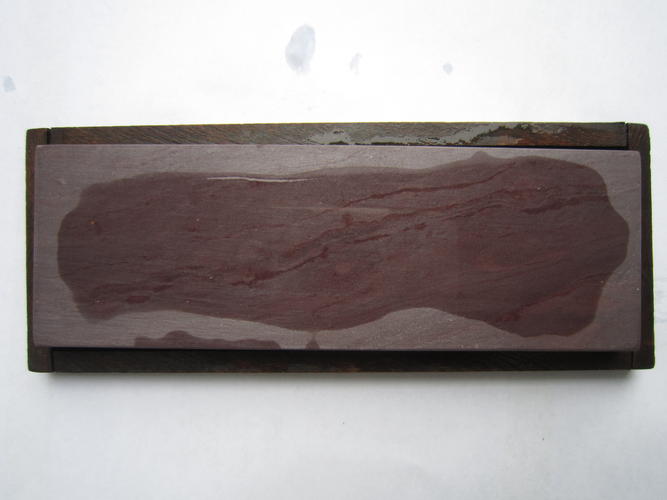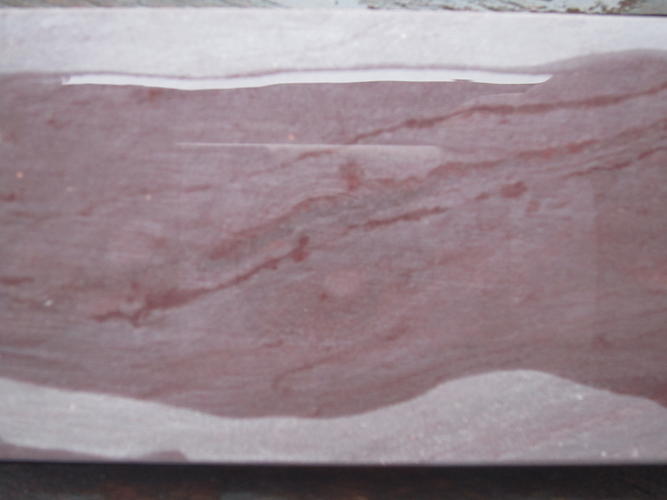Results 11 to 20 of 306
Thread: French Hones
-
01-01-2013, 01:52 PM #11aka shooter74743




- Join Date
- Sep 2009
- Location
- SE Oklahoma/NE Texas
- Posts
- 7,285
- Blog Entries
- 4
Thanked: 1936
I use my Special Stone with oil, tried the slurry thing and it didn't go so well as they are very hard stones and the slurry doesn't break down like a coti or thuringian. They will push an edge to very crisp for sure.
Southeastern Oklahoma/Northeastern Texas helper. Please don't hesitate to contact me.
Thank you and God Bless, Scott
-
The Following User Says Thank You to ScottGoodman For This Useful Post:
hatzicho (01-01-2013)
-
01-01-2013, 05:55 PM #12

Well I have had a first try today honing the Lorraine stone and I have to admit that I am deeply impressed by its performance.
I took an old Heinrich Böker Edelweiss razor that I didn’t hone before and that was far away from being sharp. It even has some (very) small defects on the blade, so normally you would start with setting the blade with a 1000 grit artificial stone for example.
The stone feels quite hard but (self)slurries very easily and is sure one of the fastest stones I have ever used. My first feeling was that I hone on a Dalmore blue stone, so I was afraid to take away too much material and get too course.
I honed only about 10 minutes, cleaning the stone with water several times in between to take away the slurry.
Then I cleaned the razor and examinated the edge. The defects were gone the edge shined really mirror like. I got about 25 strokes each side on a clean leather strop.
To my absolute surprise the Edelweiss passes the HHT in the first try without problems, even not over the total length of the blade. But after some more honing on the stone, the razor was ready for endfinishing.
Unfortunately I had my shave in the morning, so I couldn’t test the Edelweiss directly with a shave.
Summarizing an absolutely great and impressing stone!Last edited by hatzicho; 01-01-2013 at 06:18 PM.
-
01-03-2013, 07:44 AM #13

Sorry, I can't find a quarry in the Lorraine region in France or in the Vosgienne region. Is there anyone who knows more? This summer we will go to France and have look.
Regards, Henk
-
01-06-2013, 12:34 PM #14

I wish we knew more too Henk. Much speculation exists on the location of the quarries.
http://straightrazorpalace.com/shave...ry-12th-2.html
MIke

-
01-06-2013, 12:48 PM #15

Mike, the grain and texture of this fox stones really seem to look similar to the Lorraine stone I have posted. Can you post some more detailed pictures of the fox.
Here are some more detailed picturs of the Lorraine stone that show the texture:


-
The Following User Says Thank You to hatzicho For This Useful Post:
Margeja (01-06-2013)
-
01-06-2013, 01:43 PM #16

The Lorraine layer was a BBW layer, sandwiched between 2 other BBW layers. Someone previously posted a picture of a La Lorraine that looks more like a regular BBW than a Fox/Goldfisch.
-
The Following 2 Users Say Thank You to Piet For This Useful Post:
hatzicho (01-06-2013), ScottGoodman (01-27-2016)
-
01-06-2013, 03:04 PM #17Historically Inquisitive



- Join Date
- Aug 2011
- Location
- Upstate New York
- Posts
- 5,782
- Blog Entries
- 1
Thanked: 4249
As stated in the previous book article that was posted on this thread, there are different kind of "La Lorraine", the courser kind was mainly used as a scythe stone and general sharpening like the picture you posted. The Finer "La Lorraine" is the red kind hence the name on Hatzicho stone,
"Pierre La Lorraine Rouge" ( Red Stone La Lorraine), same location different stone.
Hatzicho calls this stone hard, i was under the impression that the Fox/Goldfish stone was a soft stone even named very soft?
-
01-06-2013, 03:51 PM #18

The displayed stones remind me very much of "Rouge du Salm" as the previous owner Joseph Grogna (Burton quarry) the stone called. There was a gray stone he called Loraine. I have some copies of the red and gray stones. For proper qualification you would need to put the stones together and measure the hardness, mass and color complemented with a abrasiveness test.
-
The Following User Says Thank You to Margeja For This Useful Post:
hatzicho (01-06-2013)
-
01-06-2013, 06:52 PM #19

This is the Goldfisch Wetzstein/ Fox Razor Hone Piet referred too.. Here are some pics of the un-lapped bottom of the stone in the sunlight.
MIke

w/ water spray

-
-
11-08-2013, 07:18 PM #20

The book - Jacques Perret, in his book "La Pogonotomie" speaks about a "Gres". A Gres is a sandstone!
Il se fait dans les arts mécaniques une grande consommation de maitières minérales pour aiguiser affuter les instruments tranchants, pour polir les métaux, etc. Les pierres à aiguiser sont le plus souvent des grès, quón tire surfont de la formation du grès houiller ou du grès rouge. C'ést le grès rouge qui fournit la plupart des meules et des pierres a affuter, de couleur rouge, connues sous le nom pierres de Lorraine, et plusieurs autres qui-sont blanchâtres, que l’on connait sous différents noms de localités.
-
The Following 3 Users Say Thank You to Margeja For This Useful Post:
Disburden (11-14-2013), hatzicho (11-09-2013), randydance062449 (04-27-2015)


 496Likes
496Likes LinkBack URL
LinkBack URL About LinkBacks
About LinkBacks






 Reply With Quote
Reply With Quote
